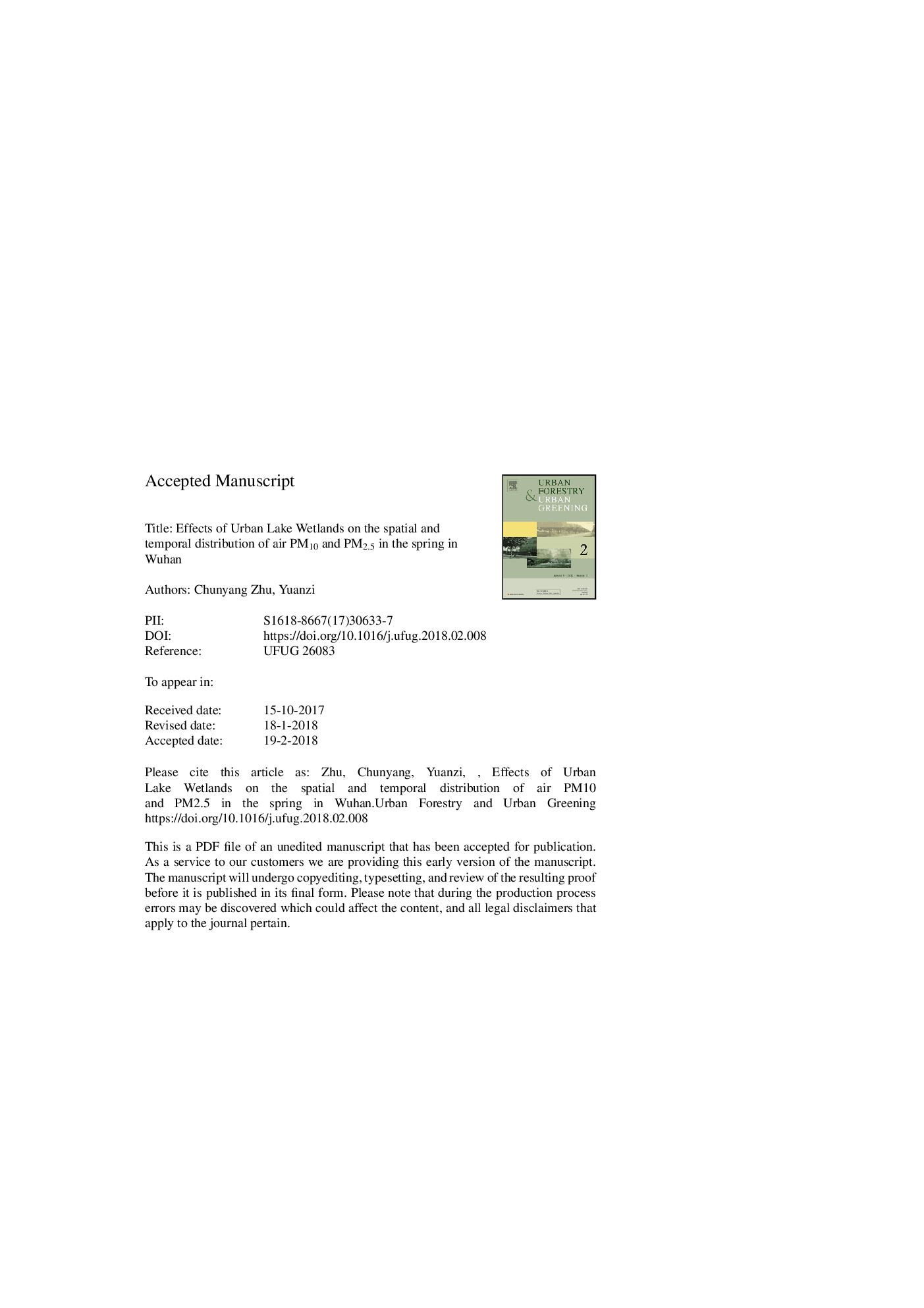| Article ID | Journal | Published Year | Pages | File Type |
|---|---|---|---|---|
| 6549280 | Urban Forestry & Urban Greening | 2018 | 51 Pages |
Abstract
Deposition of particulate matter (PM) from air is influenced by land use types and their attributes. Urban lakes wetlands can promote this deposition through their effects on the microclimate. To document these effects we investigated air PM10 and PM2.5 concentrations in transects around by monitoring PM and land use of 16 urban lake wetlands in the spring in Wuhan. The results showed that (1) lake wetland land-use regression models for air PM10,2.5 were successfully developed with an adjusted R2(PM10) (0.365-0.982) and adjusted R2(PM2.5) (0.483-0.969). Based on the lake wetland land use regression (LW LUR) model, the traffic variable was determined to be the strongest predictor of PM10,2.5, followed by distance to the city centre and relative humidity for PM10 and open green space and distance to the city centre for PM2.5. (2) The landscape descriptors of the lake wetland (less than 0.2â¯km2 lake area) significantly affected PM10,2.5 in the central areas of the city, and air PM10,2.5 concentration was negatively correlated with wetland area (WA), landscape shape index (LSI), and proportion of non-built up area in the 500-m buffer zone surrounding the lake wetland (PB). (3) The lake wetlands showed decreasing air PM10,2.5 concentration, and the maximum air PM10,2.5 concentration gap between the wetlands and their surroundings occurred at 12:00-14:00 am and was from 10 to 50â¯Î¼g/m3 for PM10 and from 5 to 15â¯Î¼g/m3 for PM2.5. Effective understanding of these PM10,2.5 effects can contribute to better planning of urban development when considering the rising concerns of global air pollution and continued rapid urbanization.
Keywords
Related Topics
Life Sciences
Agricultural and Biological Sciences
Forestry
Authors
Chunyang Zhu, Yuanzi Zeng,
